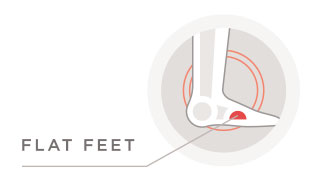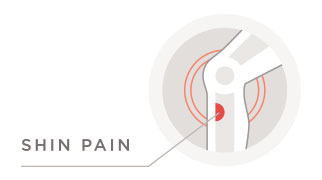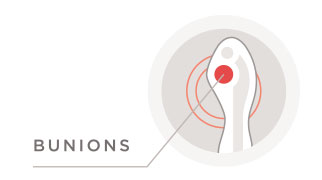
Bunions

An enlargement of the big-toe joint, a bunion gradually develops over many years. It moves the big toe joint out of place, forcing it to bend toward the other toes.
Sometimes very painful, though sometimes not at all, bunions can also cause:
- A firm bump on the outside edge of the foot
- Redness or swelling
- Restricted toe movement or irritation
- Trouble wearing shoes
CAUSES OF BUNIONS
Bunions run in families. Certain foot types are passed down to the next generation, increasing the chances of poor foot biomechanics and bunions. Walking with over-pronation can upset the foot's normal balance, creating instability and putting extra strain on the big toe joint. When combined with intoeing (metatarsus adductus), a bunion is more likely to develop.
Other possible contributors to bunions include birth defects, foot injuries and occupations that put too much stress on the feet. Footwear may make symptoms worse, but it is not the main cause of bunions, as many believed in the past.
HOW ORTHAHEEL® TECHNOLOGY CAN HELP REDUCE BUNIONS
Although they cannot control metatarsus adductus, orthotics can control over-pronation. The breakthrough design in Orthaheel® Technology redistributes the weight evenly over the foot to prevent (or reduce) the gradual growth of a bunion. The support and stability the design offers can reduce symptoms of painful bunions and provide natural relief. Other conservative treatments, such as applying ice packs or physical therapy, may help relieve symptoms. For severe bunions, surgery may be considered.

















